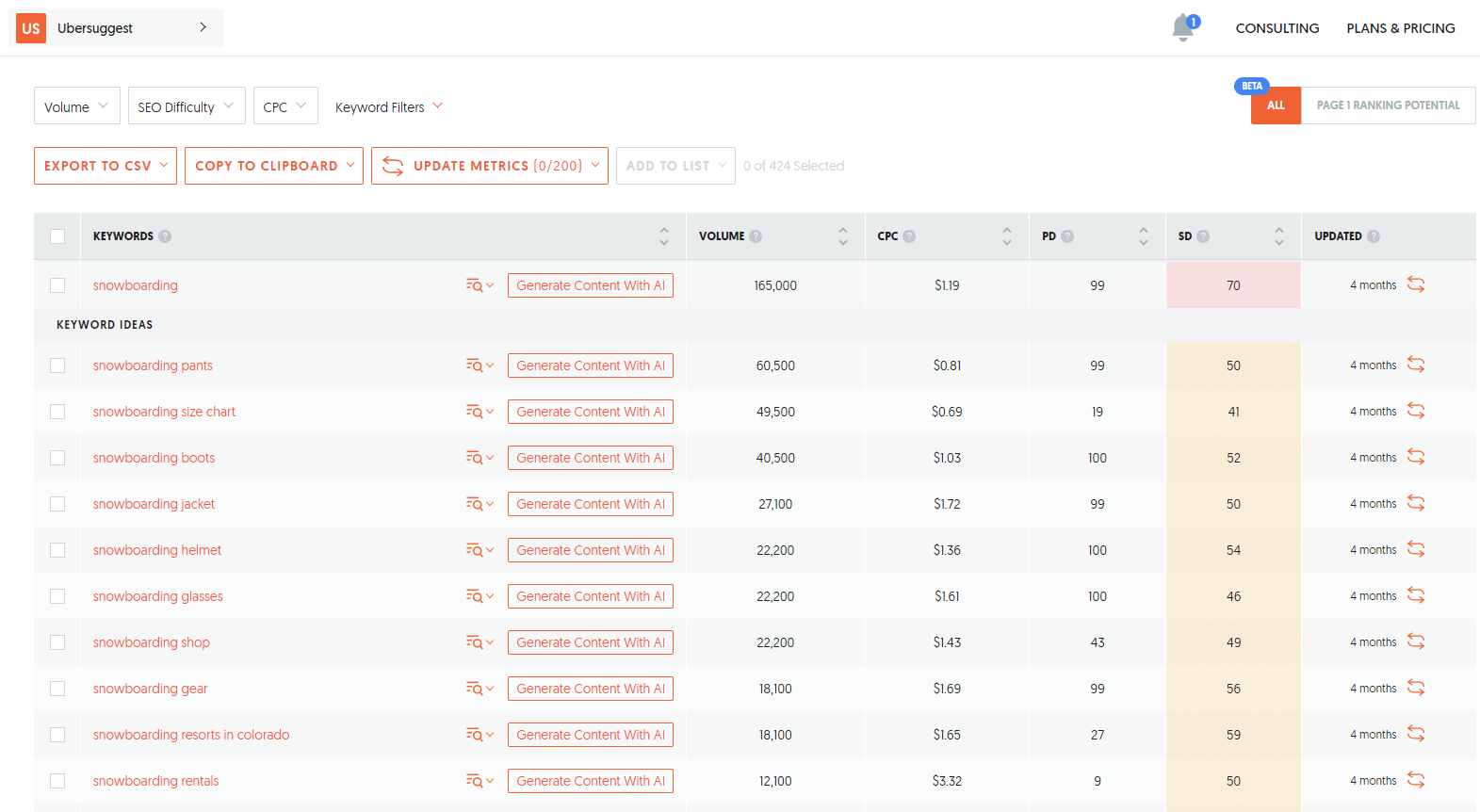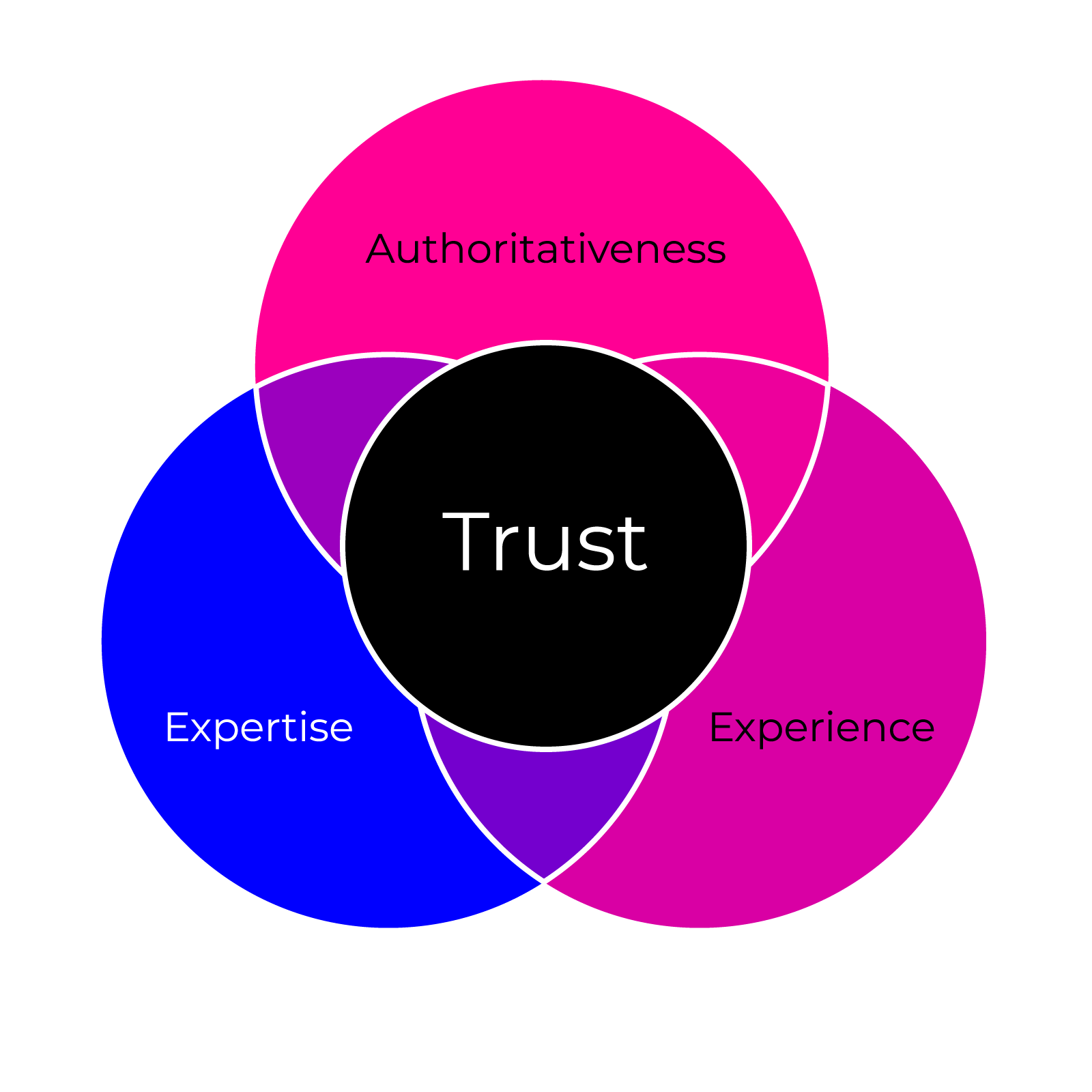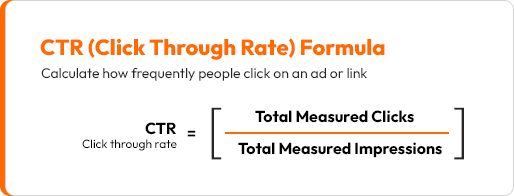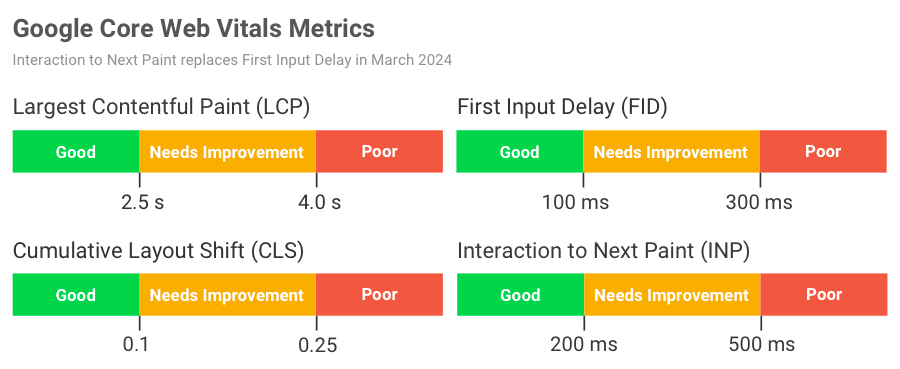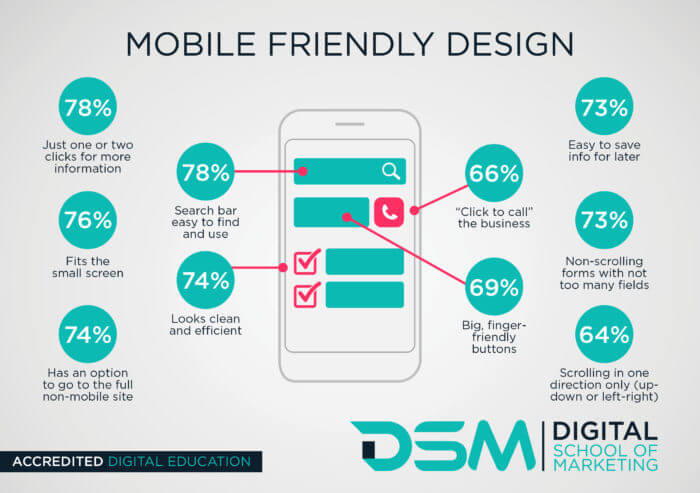SEO is dead.
That is the biggest misconception making the rounds in the digital marketing world. Things get really hyped up now that AI is taking over everything – or so what most people think.
SEO is very much alive and continues evolving as technological advances sweep the world. In the wake of AI, SEO gets more interesting. AI does not change the way SEO works. Tricky? Yes. Annoying? Definitely.
But change only pushes us to be more calculative, strategical, creative and innovative. That is why it is more important than ever to get your SEO game in tip-top shape before the SEO war begins.
That is the biggest misconception making the rounds in the digital marketing world.
SEO is very much alive and continues evolving as technological advances sweep the world.
You are in luck because we have compiled the complete list of SEO strategies to kickstart (or enhance) your marketing plan for 2024.
What are we looking at here?
What is “SEO Strategy and Why Does it Matter?
SEO Strategy, to put simply, is like your game plan to achieve your goals, in this context, SEO goals. Not to be confused with SEO tactics, that is the building pieces you need to run your SEO strategies.
SEO Strategy is important because it gives you a direction – your North Star. If you don’t have a clear view of your destination, you won’t be able to make the right preparations for your journey.
Algorithms are complex and constantly changing, thus, it is important to have clear SEO strategies. Now, let’s get into the highly recommended ones to improve your SEO game.
SEO Content Strategies
What You Should Keep in Your SEO Plan
Keywords Research and Analysis
When you think about content, keywords come to mind. Keyword research and analysis is still a valid strategy for 2024.
Keyword research and analysis are the first steps to creating compelling content for your audience and search engine.
From a single keyword research dataset alone, not only you will find the relevant keywords you want to use in your content, but you can also get hundreds of content ideas for blog articles, social media content, and campaigns!
Okay, let’s look at this example from Ubersuggest (a good tool, sufficient to help with your SEO activities). From the keyword “snowboarding” alone, you already have content ideas you can work on like “Snowboarding Gears for Dummies”, “Top 10 Snowboarding Boots”, and etc.
Why? Because search engines are based on contextual references to close the gap between readers/watchers/listeners to your site.
If you don’t give signs to a search engine that your content is relevant to the people you are targeting, the search engines cannot process the request properly and promote your content to your would-be customers.
Over the years, search engines continuously improved their semantic search to filter out weak content from the rest, which also impacts how you approach keywords.
Before, keyword stuffing could get you further in people’s eyeballs on SERPs, but now, with Hummingbird and BERT in the picture, you can no longer rely on those moves.
You must utilise not just exact match keywords but also LSI, related, and contextual keywords to make your content worth the top SERPs result – even for Featured Results, Search Generative Engine, Image SERPS and Video SERPS!
Content Depth
It is a wide and probably unified understanding that long-form content gains the most traffic. There is also more to this story – just like with everything in the world.
When people subscribe to strict rules of word counts, the quality of the content tends to be dismissed or forgotten.
Search engine values depth – quality depth. This is why in simpler terms, “the longer, the better” was used, because, for some reason, “depth” equates to “length”.
Take a pause and distinguish the two.
Search engines value content that explores the necessary depth the topic provides. Sometimes, a topic can be covered in depth with just 600 words, especially for news-related or relatively new things.
The point the search engine is trying to make is to cook up content that explores each angle of a topic that is relevant to the topic. If you add extensions of the topic that is not directly related just to add up the word count formula, the theme of the page can be convoluted with multiple messages.
E-E-A-T
Experience, Expertise, Authority and Trustworthiness.
This content strategy has been shouted from the rooftop since 2021. Content is deemed King if they are E-A-T-esque.
In 2023, Google being Google, went and released another alphabet to the group – Experience. Don’t panic just yet because when you see what each component plays a part in the overview of the content, you will find it is not as intimidating as it sounds.
Here’s a short description of each component and how it ties with each other:
- Experience is when someone publishes content about a topic that they have personally engaged with. This can be a product review of things they used or first-hand knowledge about a situation that they have gone through themselves.
- Expertise is like experience but without the “living through it” part. They have the knowledge about it. Like from the outside looking in, they know what the subject matter entails but they have not been directly in contact with it.
- Authority is like your badge of credibility. For instance, if you have two articles about semiconductors, one by a hobbyist and one by a specialised engineer, the engineer’s content is considered more authoritative and reliable.
- Trustworthiness combines experience, expertise, and authority. When you work on a page and provide clear experience, deep expertise, and solid authority, Google deems your site trustworthy, leading to higher and more frequent SERP placements.
But how do we achieve that?
This strategy does not solely fall on the shoulders of content, but a big chunk of it does.
When your site produces content (however format it may be), it has to convey to the people that your site can be trusted; the topic you choose is something your niche is well-versed in, and your brand has a good repertoire for its customers.
Adding sources, providing samples, breakdown data, and being linked to or linked by credible sites in the field are the elements you need to include when you work on your content.
Do you have to incorporate all elements into your content? No. You only have to apply according to the needs of your content.
You must remember that Google wants to provide value to its users, so the more substance you invest in your pages, the higher your E-E-A-T score is in the eyes of Search.
What You Should Keep in Your SEO Coffin
Keyword Density
Resonating from the earlier strategy, this worked wonders back in the 2000s, but now that search engines have refined their system, repeating the same keyword for X amount of time will not add up to rankings or traffic.
There is no longer a definite formula for how many times you should repeat a word within the content. The content has to be natural; thus, placing keywords oddly throughout the page just to fit the now-dead formula is pointless.
Naked Content
As much as people love to read to get information, we all have our limits. I know I do, and I love to read.
Back in the good ‘ol days, a page filled with text could get the ranks and traffic across from keywords, internal linkings and such.
Now, our attention span may not accommodate that anymore. People are always on the move, chasing time and they want answers as fast as possible without having to digest over 1,000 words worth of text only.
Keep this strategy in the trash pile to keep your bounce rates low.
SEO Technical Strategies
What You Should Keep in Your SEO Plan
Domain Authority
Yes, domain authority is still a thing in 2023. It will continue to be an important part of vouching for your site for the search engine in 2024.
Brian Dean from Backlinko remains domain authority as its top SEO factor to take care of when you are managing your site.
It makes sense because domain authority considered all your site’s optimisation scores from technical, site architecture, content, and user experience elements to a tee.
With the addition of Core Web Vitals and Helpful Content updates, the great care you need to give your domain is evermore important.
Other factors that could improve your domain effectively include, but are not limited to:
- Keyword placement in subdomains
- Domain history
- WhoIs information
- Country TLD extensions (for certain cases, not a must)
- Robot.txt
- Sitemaps
It is a perfect summary to describe how your site is performing among the other gazillion websites working on the same thing as you are. That is why it is still a good deal to improve your domain authority always.
On-page & Off-page Optimisation
Metadata and Meta Tags
Metadata and meta tags serve as an information provider to search engines. It is only visible in the page source and serves specific purposes, such as;
- Providing snippets about the content when displayed in the SERPs like meta title and meta description tags;
- Informing how the content is structured from the Hn tags;
- The language and country the page is directed to via the hreflang tags;
- The notion of whether the page is canonical to another page through the canonical tag;
- The specifications about an image through alt tags; and
- Special rules or directives for bots on how they should treat the page when they are crawling them.
Out of the lot, don’t lose your focus on the title and description when you are optimising your pages because the rest are pretty much automated by default in most, if not all CMS.
Page titles and meta descriptions are still very unique to each case. This is the first thing people will see when they see the SERPS. It is an evergreen strategy that helps you maintain your page at the forefront of the competition.
What makes a good title tag?
Conciseness. A good title tag needs to be concise because it is the front door of your house. If your house has mixed or elaborate directions on how to open it, people will go to the next house instead.
Primary keyword. A good title tag needs to have a clear identification of what the page they are about to click on is about. Some SEO enthusiasts recommend placing your primary keywords at the start of the title tag, and some are pretty flexible. This is up to your experimentation and what works for you.
What about the description tag?
Descriptive. A good practice for any meta description is to be descriptive of the page they represent because this will be the only preview users will see to get an idea of what your page is about or if you are offering what they are searching for.
Call to action. Whether your page is about selling a product, providing services or even describing something, there is always a space to urge users to take action. This is where the bulk of your Click-Through-Rate (CTR) influence depends on.
Link Management and Relevancy
It may not be as important as back in the day, but its relevancy is still valid today and for years to come (if another core update comes along and change the game).
The main difference between backlinks now and back then is link building now focuses heavily on quality. Back in the day, the higher the number of referring domains, the better your site would do.
Not anymore. Far from it. Ask John Muller from Google.
The search engine will look at your links profile and determine whether the referring domains are quality enough for them to give you a pass on their assessment to put you on the first page in SERP or the Rich Snippets results.
A paid link is another contradictory strategy that SEO enthusiasts have to take the “agree to disagree” stance.
One part still sees value in paid links and has campaign data to prove it, while another sees this as a disingenuous tactic in the SEO game.
The truth is, it can be one way or another. Search Engine Journal explained it well for the treatment of guest posts. The article stated that for guest postings and such, it would be best to include a [sponsored] tag.
Does it deter the search engine from validifying it? If the referring domain is spammy, then it will likely let it burn to the ground. If the site actually provides the value it represents, it will continue to record it.
Rich Results/Rich Snippets
Rich results or rich snippets, are ‘gifts’ search engine provides that highlight certain parts of content. Search is usually the one to provide these perks. Rich snippets can display images, ratings, prices, and many more to make the information delivers faster to the audience.
Below are some rich results that commonly appear on SERPs and are highly competitive to get:
- Frequently Asked Questions (FAQ)
- Image Pack
- Video Pack
- Product Ratings
- Event
- Job Postings
- Organisation
Click-Through-Rate
If you are ranking on the top fold of SERPs, it does not mean you already won because the winning kick is when people visit your site from the SERP. This is where Click-Through-Rate comes into play.
CTR measures the percentage of users who click on a specific link out of the total number of users who view a page.
It is calculated by dividing the number of clicks by the number of impressions and multiplying by 100 to get a percentage.
CTR is important to keep track of because it can indicate the overall performance of your content. A higher CTR tells you that your content is compelling and relevant to your audience, encouraging them to take action. A low CTR tells you there is something not quite right and you need to revisit them.
Thanks to the abundance of ads and rich snippets results parading on the first page of the search engine, the trick to getting clicks are…tricky.
It is important to get your click-through rate as part of the main goal when you plan to rank for the first page.
How to do it? Meta description – a good one at best.
A meta description is not an essential ranking factor for SEO, but it does a good job of influencing people to click on your post.
Core Web Vitals
Okay, things are going to get technical for this topic but stay with us.
Core Web Vitals is the ranking factor in 2022 and probably moving forward into 2024.
The core web vitals are intricate elements that revolve around how efficient your page is able to present itself to users. It encompasses the elements of page speed, content reconstruction, load time and more.
Core web vitals’ main metrics are:
- LCP (Largest Contentful Paint) measures the time taken to render the largest visible content element in the viewport from when the user requests the URL. It typically refers to images, videos, or large text blocks. LCP indicates how quickly the main content of the page is visible to the user.
- INP (Interaction to Next Paint) assesses a page’s responsiveness by measuring the time it takes to respond to all user interactions (clicks, taps, keyboard inputs) during a user’s visit.
- CLS (Cumulative Layout Shift) measures the total of all unexpected layout shifts during the page’s lifespan. If your CLS scoring system shows zero, it means no shifting; higher scores indicate more shifting. CLS ensures a stable visual experience without unexpected movements of page elements.
The focus when they rule core web vitals to be an essential ranking factor is because it pushes webmasters to put user experience in mind when running their site.
The goal is to provide users with ultimate ease when engaging with your site, whether on desktop or mobile.
Mobile Optimisation
Mobile took the front seat when it came to SEO success when the mobile-first indexing updates rolled out back in February. As the rise of voice search is also paving its way forward, there is no end to how important it is to make your website mobile-friendly.
Brands must think about optimising their desktop experience the same way mobile users would want them to optimise it.
This comprises loading speed, design, page structure and navigation. All of the key elements where if one works bad, users will simply move on to the next link on the page.
Backlinks
It may not be as important as back in the day, but its relevancy is still valid today and for years to come (if another core update comes along and change the game).
The main difference between backlinks now and back then is link building now focuses heavily on quality. Back in the day, the higher the number of referring domains, the better your site would do.
Not anymore. Far from it. Ask John Muller from Google.
The search engine will look at your links profile and determine whether the referring domains are quality enough for them to give you a pass on their assessment to put you on the first page in SERP or the Rich Snippets results.
A paid link is another contradictory strategy that SEO enthusiasts have to take the “agree to disagree” stance.
One part still sees value in paid links and has campaign data to prove it, while another sees this as a disingenuous tactic in the SEO game.
The truth is, it can be one way or another. Search Engine Journal explained it well for the treatment of guest posts. The article stated that for guest postings and such, it would be best to include a [sponsored] tag.
Does it deter the search engine from validating it? If the referring domain is spammy, then it will likely let it burn to the ground. If the site actually provides the value it represents, it will continue to record it.
Multimedia Optimisation
Off with the boring text and in with diversifying your content. SEO specialists must always figure out a way to encourage page dwell time. They have to make the page interesting.
Easier said than done, right?
Not quite. To mesmerise the audience, you don’t need to make confetti fly in the middle of the page screen. But instead, you can use various forms of media to convey the words on your pages as a supplementary visual aid for readers on the go.
Add videos, images, gifs, infographics and supplementary content to your piece. This strategy will not only make your content worthwhile, but you open the opportunity for the search engine to choose your content for video and image rankings as well.
A spot on the Rich Snippets results!
Video Search Engine Optimisation (VSEO)
Video Search Engine Optimisation (VSEO) involves optimising video content to improve its visibility and ranking on search engine results pages (SERPs) and video platforms like YouTube. It is similar to SEO, but for videos.
Key video optimisation techniques highly recommended include:
- Incorporate keywords naturally into your video titles to improve search visibility.
- Provide transcripts for audio content and captions for videos to make your content accessible to a wider audience.
- Compress video files to reduce loading time without sacrificing quality. You can use Content Delivery Networks (CDNs) for this.
- Use schema markup to enable rich snippets like video thumbnails, durations, and ratings in search results, making your video more appealing.
- Engage with viewers by responding to their comments and questions on your videos.
- Regularly update your video content to ensure it remains relevant and accurate.
- Design custom, high-quality thumbnails that grab attention and accurately represent your video content.
- Share your videos on social media platforms to reach a broader audience.
Voice Search Optimisation (VSO)
Voice Search Optimisation (VSO) focuses on enhancing content to be easily discoverable and accessible through voice-activated search queries made using virtual assistants like Siri, Google Assistant, and Alexa.
Similarly to SEO and VSEO, the optimising game is pretty much the same except you have to treat them differently a bit. VSO is human-like because the answers it gives to us resonate from our conversational way of inquiring.
Hence, you have to plan your content in a way that is easy to understand and somewhat casual enough for search to use as an output for any voice search inquiries.
Some recommended VSO tactics include:
- Target conversational keywords, keywords that use every day language;
- Apply a lot of question-based sections or content;
- Optimise your local SEO as many voice searches tackle a lot of local-centric questions;
- Use schema markups to help search engine understands your content better; and
- Make sure your page or site is mobile-friendly.
What You Should Keep in Your SEO Coffin
Quantifiable linking
As mentioned earlier, the search engine does not define your page’s SEO success based on how many referring domains you have.
There is no magic formula of 100 links that can contribute a spot in the top 10 of the SERPs.
If you have this formula in hand for your business plan, you might want to revisit whether the number defines the values it brings to the table.
Hidden content
Hidden content is usually the kind of strategy webmasters take to ‘boost’ the probability of keyword ranking or crawler instructions without damaging the user experience.
When browsing through a page, you will feel very put off when you see random HTML codes or keyword spamming at any part of the page. This is why things are being hidden. It is not meant for humans to read it but for bots.
The search engine does not like that because it counts as deceitful.
It does not put the user’s interest at heart; in another rough way, similar to cheating.
Hidden content is no longer a positive strategy.
If you have already implemented some of this on your pages, you might want to consider revisiting those pages and determine whether that is something you should keep or remove.
SEO Trends
AI & Machine Learning
AI (Artificial Intelligence) and machine learning in SEO involve using advanced algorithms to analyse, predict, and enhance search engine rankings and user experience.
These technologies help in understanding user intent, personalising search results, automating content creation, and improving the accuracy of keyword targeting and data analysis.
Google’s Helpful Content
Google’s Helpful Content update focuses on promoting content that is genuinely useful to users.
This update prioritises content that provides clear, valuable, and comprehensive answers to user queries, aiming to reduce the visibility of content created primarily for search engine rankings rather than user benefit.
Experience First
“Experience first” in SEO emphasises prioritising the overall user experience on a website. This includes aspects like site speed, mobile-friendliness, intuitive navigation, and engaging, high-quality content.
A positive user experience can lead to higher engagement, lower bounce rates, and better search engine rankings.
User Signal Prioritisation
User signal prioritisation involves search engines placing more importance on user behaviour metrics, such as click-through rates (CTR), time on page, bounce rates, and engagement rates.
These signals help search engines understand how users interact with content and can influence rankings by highlighting content that satisfies user intent.
Search Generative Engine (SGE)
Search Generative Engine (SGE) refers to a search engine that utilises generative AI to create and refine search results.
SGE can generate unique, contextually relevant content and responses to user queries, enhancing the search experience by providing more accurate and tailored results based on real-time data and an advanced understanding of user intent.
Final Takeaways
To recap, below are the SEO strategies you should focus on or continue to focus on this year and the next:
- Keywords Research and Analysis
- Content Depth
- E-E-A-T
- Domain Authority
- On-page & Off-page Optimisation
- Click-Through Rate (CTR)
- Core Web Vitals
- Mobile Optimisation
- Backlinks
- Multimedia Optimisation
- Video Search Engine Optimisation (VSEO)
- Voice Search Optimisation (VSO)
Maybe it is time to keep these SEO strategies in the shredder until further notice:
- Keyword Density
- Naked Content
- Quantifiable Links
- Hidden Content
If you want to keep up-to-date with the SEO strategies for your business, you can always bookmark this page because we will update it as frequently as possible to give you new updates from search engine.
Need help with your SEO? Morph Digital might be able to give some pointers to get you started. Shoot us an email whenever you are free!

